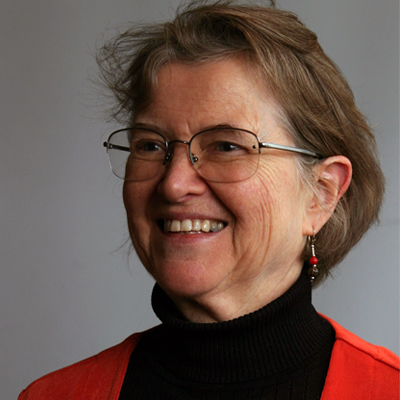Understanding weight-gain zones for better weight management
Obesity in America is a health issue we are all familiar with, and much research has been done to control and reverse it. Studies that determine these parameters are performed with groups of people from which average values are obtained, that are then applied to all people. The unfortunate result of this kind of study is that the dietary requirements and the number of calories for maintaining a certain weight determined by research may not be relevant at the individual level. Therefore, the generalized advice of the government to the public to, “keep the sugar level as low as possible,” or “the fat in our diet as low as possible,” may or may not be beneficial to all individuals. Dr. Marit Nilsen-Hamilton, Professor of Biochemistry, Biophysics and Molecular Biology at the Iowa State University, is thus developing a weight model that can ultimately reflect the state and the needs of each individual. By accumulating and analyzing data, Dr. Nilsen-Hamilton hopes to create a system that provides an accurate assessment of each person’s caloric needs, and present positive solutions to managing our body weight.
A cell biologist currently heavily involved in a number of projects that involve applications of RNA molecules, Dr. Nilsen-Hamilton has built a strong scientific background over the last 45 years that has given her a deep perspective from the molecular to the organismal level from bacteria to mammals. Recently, she embarked on a new, exciting project on weight gain and weight loss that began when she made some significant discoveries while tracking her own weight loss program. She is currently building a series of testable hypotheses from these discoveries to develop a model for weight gain and loss with the goal of helping people determine a practical dietary plan that creates solutions specific to each person’s caloric needs. Ultimately, Dr. Nilsen-Hamilton hopes to acquire data that can lead to breakthroughs that will potentially shake and shape the way we approach obesity in America.
Current areas of this new project include:
- The “Zones” of Caloric Need: One of the discoveries that Dr. Nilsen-Hamilton has made is that she can be in one of two "zones" with respect to caloric need for maintaining her weight. The difference between these zones means about 25 lb/year weight gain or loss while eating the same amount of food calories. When she is in the weight gain promoting, or the WGP, zone, she would gain ~25 lbs/year, while in the other, weight gain resistant, or WGR, zone, she would not gain anything while eating exactly the same number of calories and the same or similar foods. As the time in each zone is long, measuring out months to years, Dr. Nilsen-Hamilton studies how we are maintained in one zone or the other and how we switch between zones. Her current hypothesis is that the bacteria in our guts, or the microbiome, determine the zone and that we have a different gut population depending on which zone we are in.
- Shifting from One Zone to Another: Individuals staying in the WGR zone will likely be able to eat more without gaining weight. Dr. Nilsen-Hamilton has some grounds to believe that the sugar level in her diet determines which zone she is in, with a higher level of sugar in her diet placing her in the WGR zone, where she would want to be. The level of sugar for this zone is what has been recommended by the National Academy of Sciences. However, more recently there has been a push to lower sugar in the diet. Shifting to the lower sugar level that is now proposed by groups such as the World Health Organization is what is correlated with her being in the WGP zone where she cannot eat much without gaining weight. Dr. Nilsen-Hamilton believes that the sugar level of our diets determine which bacteria populate our guts and, moreover, whether we easily gain weight or can maintain our weight more easily without gaining.
- Caloric Needs Pertaining to Weight Gain or Weight Loss: Using herself as the model, Dr. Nilsen-Hamilton has determined her caloric needs in each zone and how they relate to weight gain or loss. Here she has the most data in the WGR zone and can now predict with more than 90% confidence how much she needs to consume to lose or gain a given amount of weight per month. The data can be represented as a straight line with a slope and an intercept, which allows her to compare her data for both zones and the lines are parallel but with different intercepts. For this part of the study she is also collecting data from one other person, whose line is parallel to hers and with a different intercept. Based on this, Dr. Nilsen-Hamilton believes that the lines for many people may be parallel, whereas the intercepts vary. Ultimately, she hopes to be able to obtain data from other individuals.
- The Role of Exercise in Determining the Zone: A fourth aspect of this research is to understand the role of exercise in determining the rate of weight loss and the zone you are in. So far, Dr. Nilsen-Hamilton’s data shows that level of exercise does not affect the rate of weight gain and loss within a zone, but that it may speed the transition between zones. In the future, she hopes to expand this research area to determine how exercise affects the transition between zones.
Bio
Dr. Marit Nilsen-Hamilton was born in Norway and came to the US when she was in high school. When the Germans invaded Norway during World World II, any merchant marine that was outside the country had to stay out. A sea captain, Dr. Nilsen-Hamilton’s father was bringing immigrants from Western Europe down to Australia, and that is where he met Dr. Nilsen-Hamilton’s Australian mother. A few years after Dr. Nilsen-Hamilton was born, there was a threat that Russians might invade Norway as their submarines had been found nearby, and Dr. Nilsen-Hamilton’s family moved to Australia, then Japan, where her father helped catapult the Japanese shipping industry long before Japan rose to economic power. After a while, they moved back to Australia, and her father was recognized for his great work and was recruited to a company in New York City. Her unique childhood background has therefore undoubtedly expanded her understanding of people and the world around her. This world around her that she was getting to know was indeed remarkable; when her father was still a first mate and dating Dr. Nilsen-Hamilton’s mother, he boarded the ship, having forgotten to put his letter to her in the mail. He told his captain of his concern, who then took the mail, stuck it in a bottle, and threw it overboard. Miraculously, somebody in New Zealand picked up the bottle, took the letter and mailed it to Dr. Nilsen-Hamilton’s mother.
Dr. Nilsen-Hamilton first became interested in science when she moved to the US, in high school, and learned that our DNA determined how we develop in the womb and beyond and that DNA was studied by biochemists. While a biochemistry graduate student at Cornell University, Dr. Nilsen-Hamilton studied hemoglobin and joined the Salk Institute in San Diego, California as a postdoctoral fellow, where she was introduced to cell biology and growth factors that regulate cell proliferation and differentiation. This exposure led her to ask more questions about cells, and she did more studies in mice to understand the role(s) of the secreted proteins in physiology. Currently, she has started to focus on individual cells and how adjacent cells communicate, and she is developing new ways of imaging cells, coming back full-circle to studying DNA and RNA in the test-tube. Some of her studies include DNA and RNA aptamers that were not even known when she became interested in DNA in high school. She is also heavily involved in very interesting projects to understand how a certain group of bacteria can make magnets. These studies, performed over a period of more than 45 years, have given her a perspective on science and the scientific method from the molecular to the organismal level and from bacteria to mammals.
Over the period of her career, however, Dr. Nilsen-Hamilton gained about two pounds a year until she was about 80 pounds overweight. At that point, approximately nine years ago, she made a deliberate effort to lose the weight, collecting data throughout the process. Because she knew that most people gained back the weight they lost, she continued to collect data for the next six years and then realized that she had made some discoveries about gaining and losing weight that could make a huge difference to others if she were able to test her hypotheses. She then started experiments to follow up three years ago, and for the most part, with one exception, these experiments have been performed on herself as subject. She remarks, “Although there are many examples in history of famous scientists experimenting on themselves and making groundbreaking discoveries, this is not seen by the current scientific community as the means of making progress.” However, to understand how weight gain and loss is regulated, Dr. Nilsen-Hamilton firmly believes that individual studies must be done, and continues to build on this new research program today.
For more information, visit http://www.bbmb.iastate.edu/marit-nilsen-hamilton/
Publications
Awards
AAAS Fellow, 2007
Regents Award for Faculty Excellence, 2003
Inventor Incentive Award, 2002
Ames Laboratory


